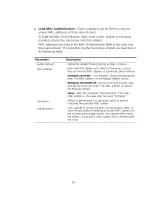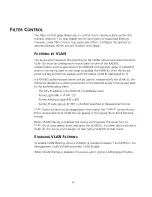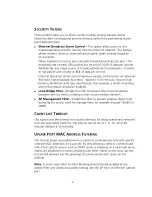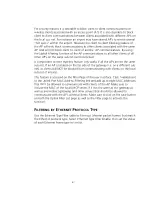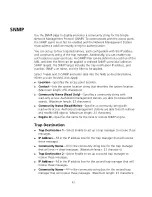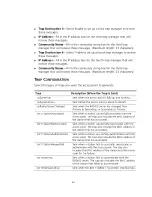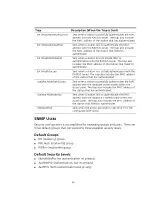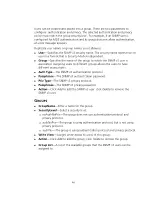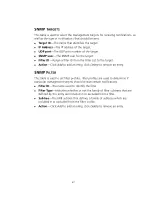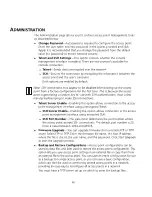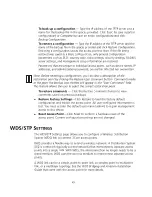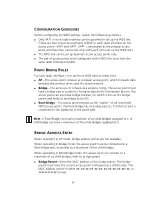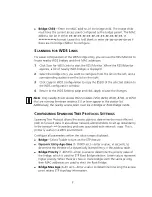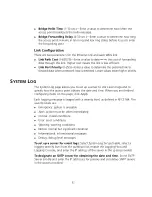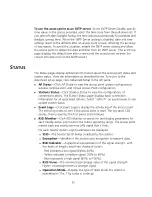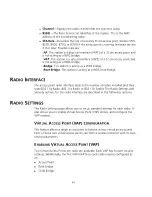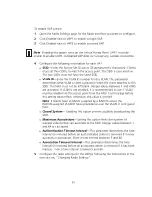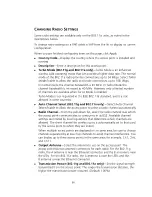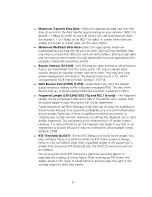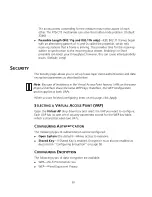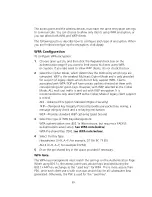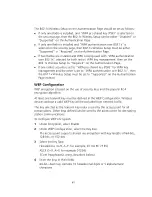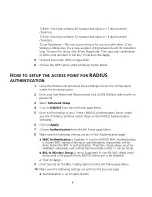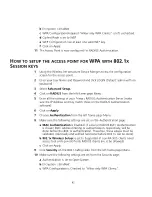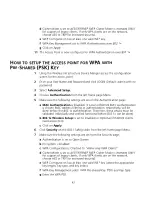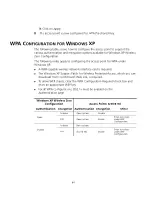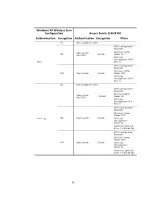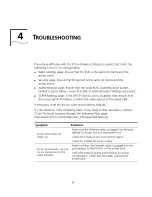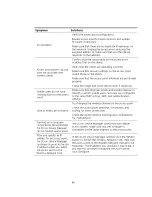
53
To use the access point as an SNTP server
: Select
SNTP Server Disable,
specify
time values in the spaces provided, select the time zone from the pull-down list. If
you select
Enable Daylight Saving
, the time adjusts automatically for standard and
daylight savings time. When the SNTP Server setting is disabled, date and time
settings revert to the defaults after an access point is reset, affecting the accuracy
of log reports. To avoid this situation, enable the SNTP server setting and allow
the access point to obtain the date and time from an SNTP server. (The event log
page displays the default time after a reset until the access point receives the
correct information from the SNTP server.)
S
TATUS
The Status pages display additional information about the access point status and
station status. View the information as described below. To return to the
Advanced Setup page, click
Advanced Setup
in the left pane.
AP Status
—Click
AP Status
to view the access point system configuration,
wireless configuration, and Virtual Access Point configuration.
Stations Status
—Click
Stations Status
to view the configurations of
connected stations. The Station Status page displays basic connection
information for all associated stations. Select “refresh” on you browser to see
update station status.
Event Logs
—Click
Event Logs
to display the activity log of the access point.
The event log resets to zero if the access point is reset. The log saves 128
events, then overwrites the first event and continues.
RSSI Monitor
—Click
RSSI Monitor
to search for and display parameters for
each nearby access point within the radio’s operating range. The access point
reports back any nearby wireless LAN signal that it finds.
For each nearby station, eight parameters are displayed:
SSID
—The Service Set ID being broadcast by the station.
Encryption
—Identifies if this station uses encryption to transmit data.
RSSI Indicator
—A graphical representation of the signal strength, with
five levels of lengths and three shades of colors:
- Red indicates a low signal (below 20%)
- Yellow indicates a medium signal (20% to 60%)
- Blue represents a high signal (60% to 100%)
RSSI Value
—The numerical percentage value of the signal strength.
Higher percentage means a stronger signal.
Operation Mode
—Displays the type of radio mode the station is
operating in (11a, 11g, turbo a, turbo g).

